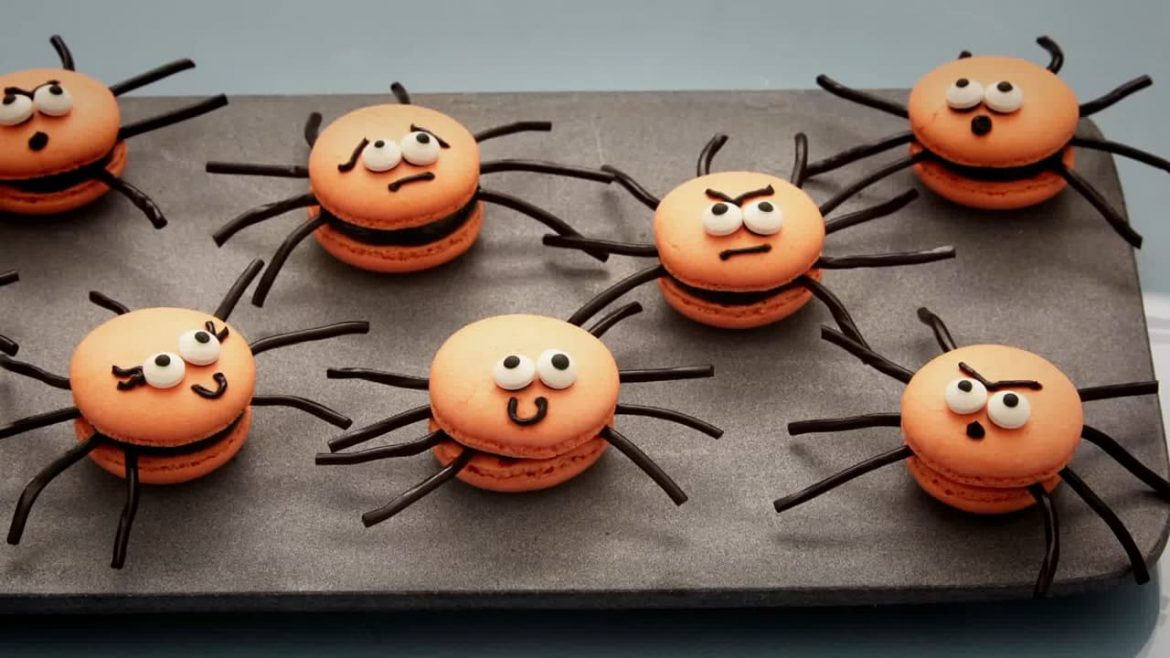Italian Macarons are on the menu in Book recipe, and we are going to teach you how to make this delicious recipe from scratch!
It’s not just kids who are getting dressed up for Halloween! Chef Anna Olson teaches you how to make these making Halloween Spider Macarons that all of your friends will just love! Follow the link below to the recipe and give them a try! Don’t forget to comment below and let us know how yours turned out!
Want to warm up for this 201 recipe? Try these 101-level bakes:
Follow along with the 📝 recipes below👇🏾👇🏾
Delicate macarons are transformed into spiders with candy eyes and black licorice. The method for making these classic macarons (but with a spooky twist) is the Italian method. This means that some of the sugar is cooked before being added to the whipping egg whites. This lends stability to the macarons batter, making the macarons easier to pipe and bake up more consistently and successfully.That said, keep in mind that although macarons are made from relatively simple ingredients, the technique makes them a little finicky. It takes a bit of practice (and sadly, failing at least once – I have learned this way myself) to learn how to “read” when they are ready to bake, and try to avoid making these on a rainy or humid day. Also, I highly recommend using a scale to weight your ingredients (although volume measure are provided) for consistent results.
Ingredients
Macarons
Buttercream Filling & Decor
Instructions
Notes
Recipe video
Bon Appétit
Let us know what you think of today’s Spider Macarons tips, tricks, and hacks!

